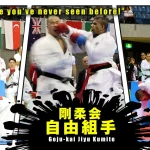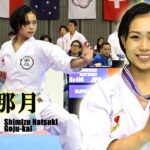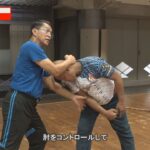Biography of André Nocquet Part 2: O Sensei’s mysterious keikogi
I have known the name André Nocquet for almost as long as I have known about aikido. Indeed, the picture of him standing in front of an old Japanese man was the first thing I saw when I entered the dojo of Michel Desroches, my first teacher. As it happened, I started my practice of aikido in André Nocquet’s federation and consequently, I was told many fantastic stories about his life and pioneering journey to Japan to study with the founder. As a young boy, it made a strong impression on me and I often dreamed about following in his footsteps and study in Japan with the masters. As I started my work as an aikido historian, I took the opportunity during my various interviews and projects to gather as much information as I could about Nocquet. I published a number of elements in my articles, and eventually was able to write a biography, which was published in Japanese in a recent issue of Hiden.

André Nocquet and O Sensei in Iwama. This is the picture that was in my first teacher’s office.
My efforts were also noticed by a number of people, including some of the closest students of Nocquet, Messrs Frank De Craene and Claude Duchesne. They asked to meet with me and to my surprise, chose me to become their successor as custodian of Nocquet’s personal belongings, which contained countless items such as a diary, letters, scrolls, films, photographs and wooden weapons. I will always remember that moment when Frank placed the keikogi jacket on my lap and said: “As you are all here to witness today, I am handing over this jacket to Guillaume Erard so that he becomes its guardian.” My blood froze as I immediately recognized the keikogi jacket that I had seen many years ago, and which according to him had been offered to Nocquet by Ueshiba Morihei in person.
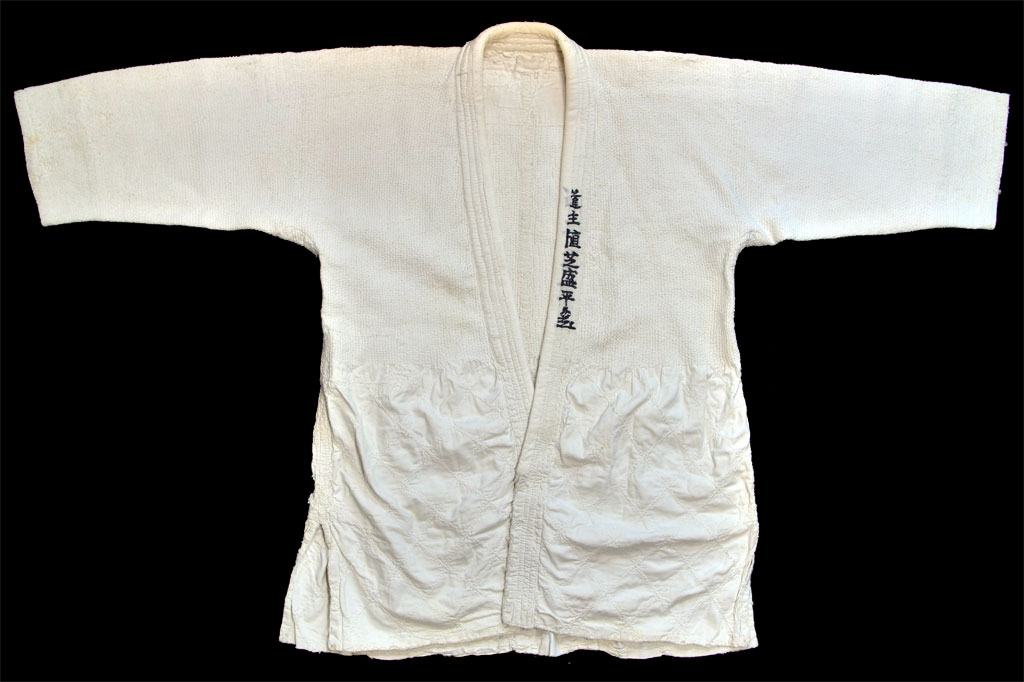
The keikogi that André Nocquet brought back from Japan.
Indeed, during his seminars, Nocquet Sensei used to say that when O Sensei gave him the keikogi, he told him the following:
Take this keikogi, I have worn it and sweated in it. Now it is your turn to wear it so that our sweats mix during your practice as you work towards developing aikido in Europe.
The truth is actually that no one knows exactly what the story of this garment was, so once I became its caretaker, I decided that it was time for it to return to Japan. I wanted to show it to knowledgeable people, including some of the last living students of O Sensei, in order to find out if they knew anything about it.
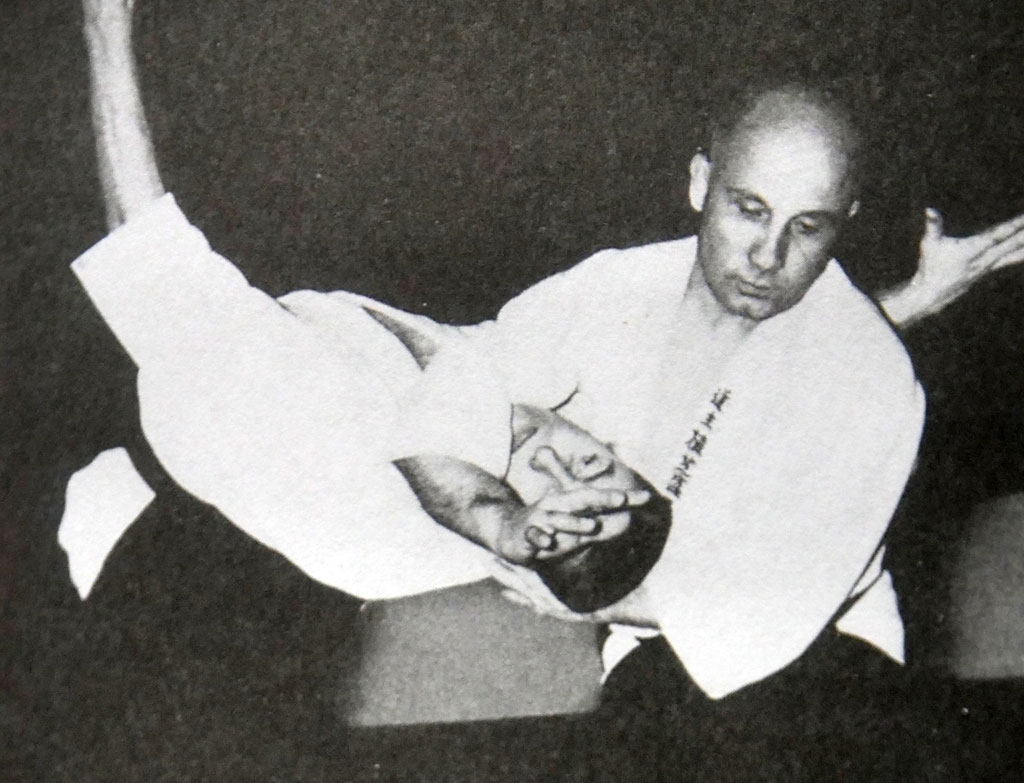
André Nocquet teaching in France. He is wearing the keikogi given to him by O Sensei.
Though given its age, the vest is in remarkably good condition, it is clear that it has been worn a lot. It has in fact been patched a number of times at different periods, as indicated by the difference in brightness in some of the threads.
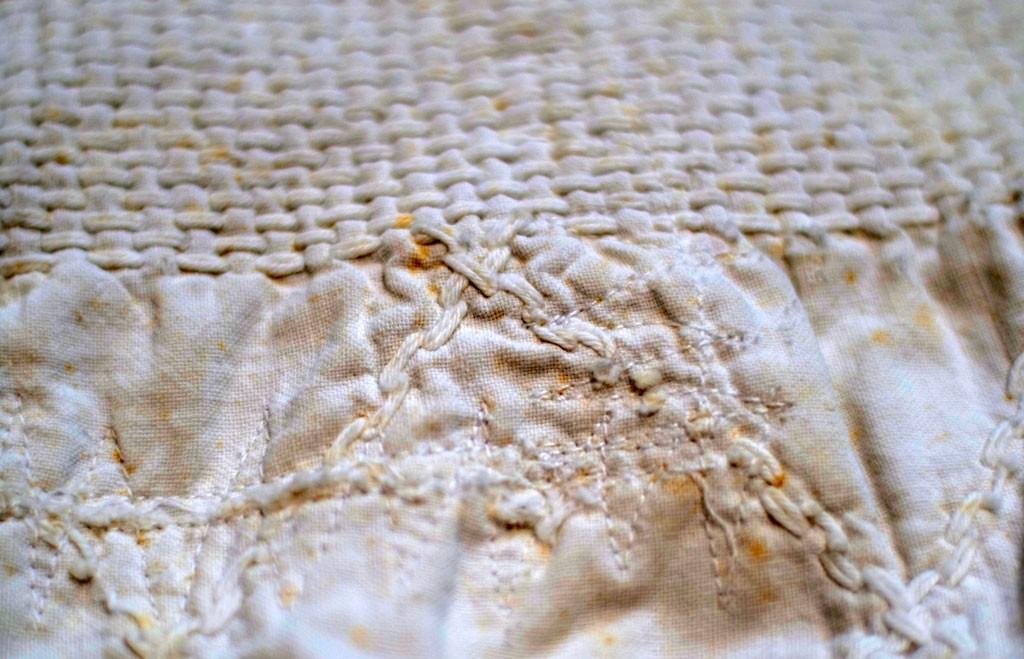
One of the numerous areas where the keikogi has been patched
I first wondered whether the jacket had been used regularly by O Sensei and mended before he gave it to Nocquet, or whether it was Nocquet himself who had used it the most. At first glance, it’s obvious that some of the patches seem to be as worn as the keikogi itself, so it is likely that they were added many years ago, but an interesting detail lies however in the reinforcement made on the collar.
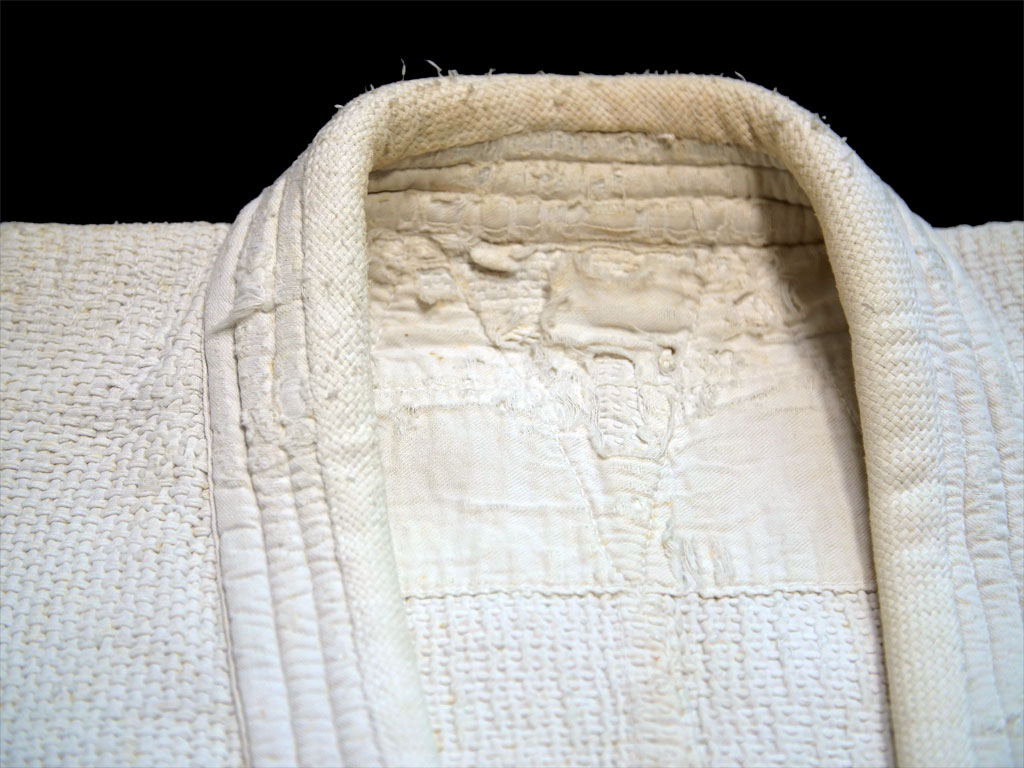
Collar of the keikogi
The reinforcement on the edge of the collar sits above the embroidery, so it must necessarily have been added after fabrications. Given the similarity of color though, I assumed that this had been made in Japan, but if we compare it with the image of Nocquet wearing the jacket, we can see that the reinforcement is not yet present at that time. This addition can therefore only have been made after the return of Nocquet to France.
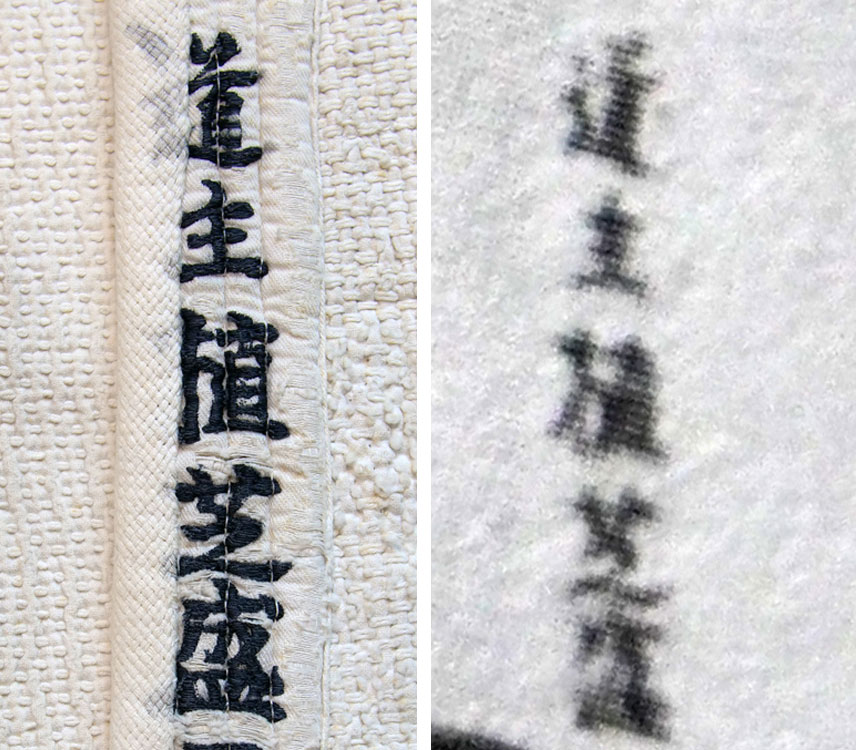
On the left hand side is the keikogi’s collar as it is today, with the patch. On the right hand side is a closeup of the picture of Nocquet wearing the keikogi after he returned to France. The patch must therefore have been made afterwards.
The weaving
The first person I showed the vest to was Jordy Delage, who is the founder of Seido Co. Ltd. and one of the world’s foremost experts in Japanese budo equipment. He gave me some very interesting information about the structure of the keikogi and how it was made. According to him, the keikogi itself is made in the same way as a judo keikogi, that is to say that the top is composed of a thick fabric with a sashiko grain of rice pattern and the lower half is fitted with a hishisashi diamond motif. Interestingly, the two types of weaving are done on the same piece of fabric, suggesting that they were hand woven from a single piece of cotton cloth.
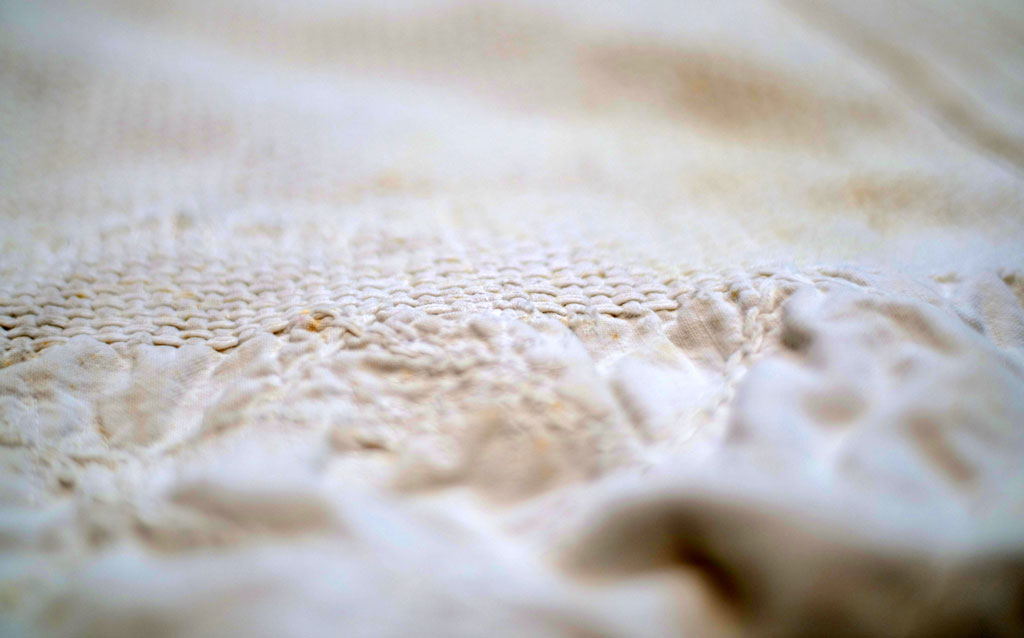
The sashiko and hishisashi weaving are made in the same piece of cloth.
Still on the weaving, I noticed an interesting detail at level of the sleeves, which seem to have been lengthened, as suggested by the presence of a seam line at the wrist. I assumed that perhaps, the keikogi had been made to fit O Sensei, and then enlarged for Nocquet. However, upon further examination, this seam appears to have been made during manufacture and it may have been due to the fact that the cotton swaths used were not wide enough to allow one-piece weaving. This process also still exists since if you order an aizome cotton hakama and ask for longer straps, it is quite possible that you will find a seam at a point of the length.
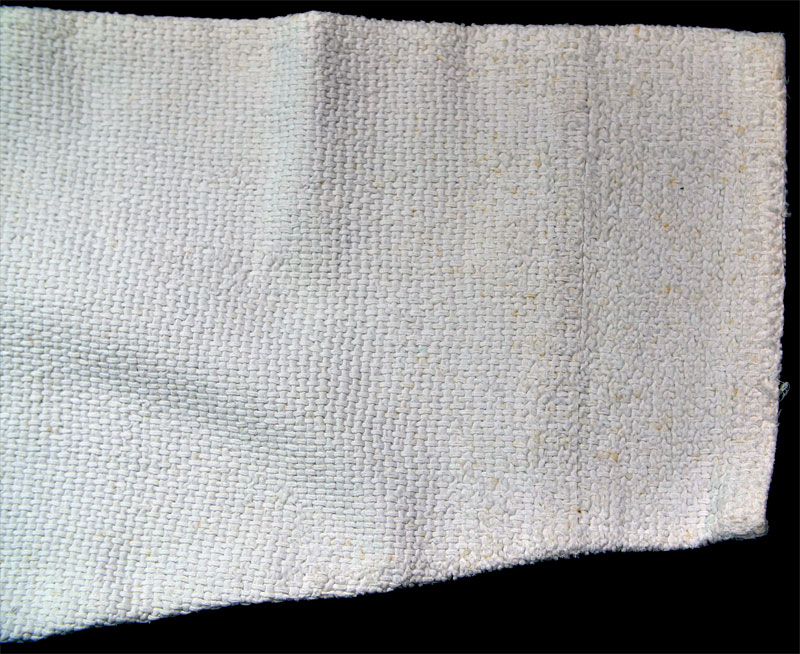
Keikogi sleeve with a seam line near the wrist.
Jordy added that the keikogi was obviously handmade, probably by someone with great sewing skills. Given the quality of the weaving and embroidery, he felt that it must have been a fairly expensive item. He said, however, that the cut was a bit unusual and that the person who made it may not have been very experienced in weaving a budo keikogi. For instance, the sides of the jacket do not close very well, especially compared to the fairly wide shoulder width.
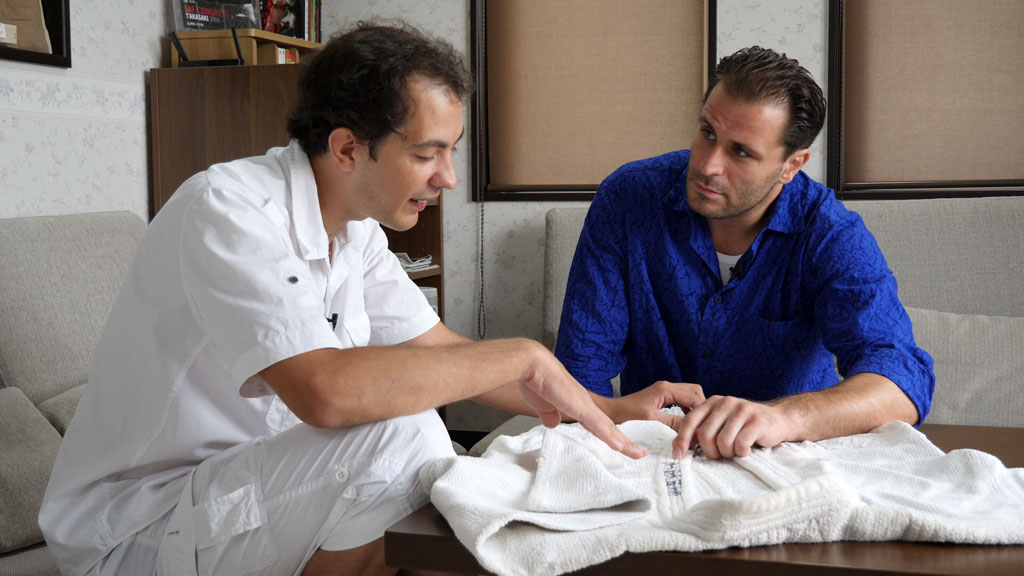
Jordy Delage and I discussing about the structure of the keikogi.
Iwata Shokai was the first company to start making keikogi for aikido around 1956. However, in comparison to a keikogi made by them for O Sensei, which is exhibited in a museum in Hokkaido, it seems clear that the one in my possession was made in a very different way, so I suspect that Jordy could be right and that the keikogi could have been made by someone else. The keikogi I obtained did not bear any label or trademark, so the identification of the maker is impossible.
The embroidery
The embroidery is made up of seven very high quality characters, with very tight weaving, which descend along the left collar of the jacket. Jordy pointed out that the characters sit behind the seam lines, indicating that they were added during the manufacturing process rather than sewn afterwards.
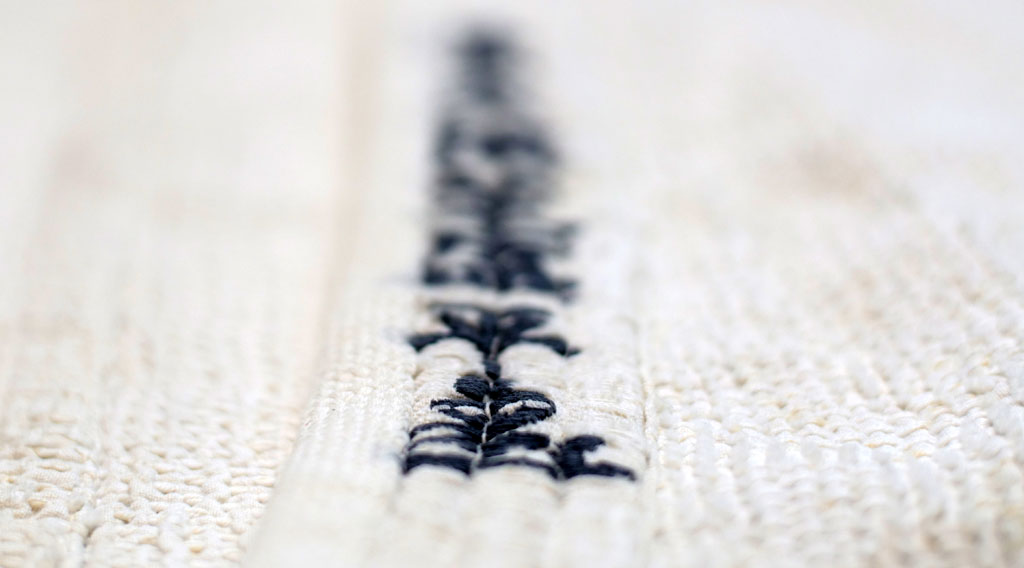
The embroidery is placed under the lines of stitching
About the embroidery, it says: “Doshu Ueshiba Morihei” (道主植芝守平), followed by a last kanji that was unknown to me. I first assumed that this last kanji could be some archaic honorific title added by the person who had made the jacket in order to offer it to O Sensei. However, I did not find any similar kanji in any of my books. I was steered in the right direction by my friend and fellow budo researcher, Baptiste Tavernier, who suggested it might be O Sensei’s kao. A kao (花押) is a stylized signature that can be used instead of the seal (判子, hanko) usually used in Japan. So I delved into the various calligraphy of O Sensei that I knew of and I quickly found the same character on several of his writings!
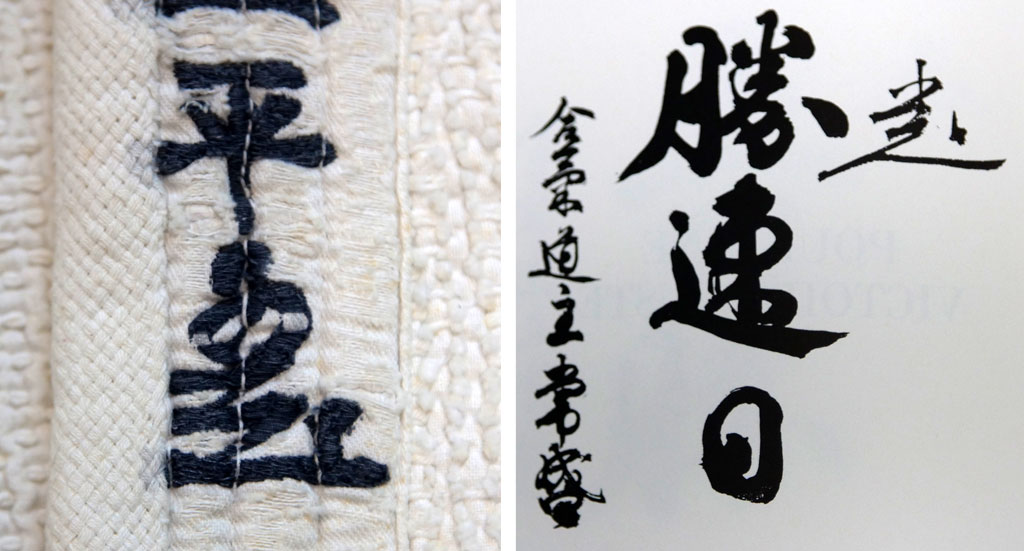
The last character on the keikogi’s embroidery (left) and O Sensei’s calligraphy bearing his kao (right).
This discovery had serious repercussions on my previous assumptions since it made it virtually impossible that the keikogi would have been a gift made for O Sensei. In fact, it meant the opposite. O Sensei either made this keikogi himself, which is unlikely, or he got it made by someone and had his seal affixed to it. More importantly, under those circumstances, he would never have worn routinely a garment that had his signature on it. In fact, I have never seen any picture of O Sensei showing him wearing an embroidered keikogi. I therefore started to doubt Nocquet’s story.
Getting the opinion of the masters
After the excitement, I realized that I had not advanced very far in my research, many questions were left unanswered and some more had come up. I decided to inquire with Tada Hiroshi Shihan with whom I had the chance to discuss about the history of aikido several times, and in particular about André Nocquet.
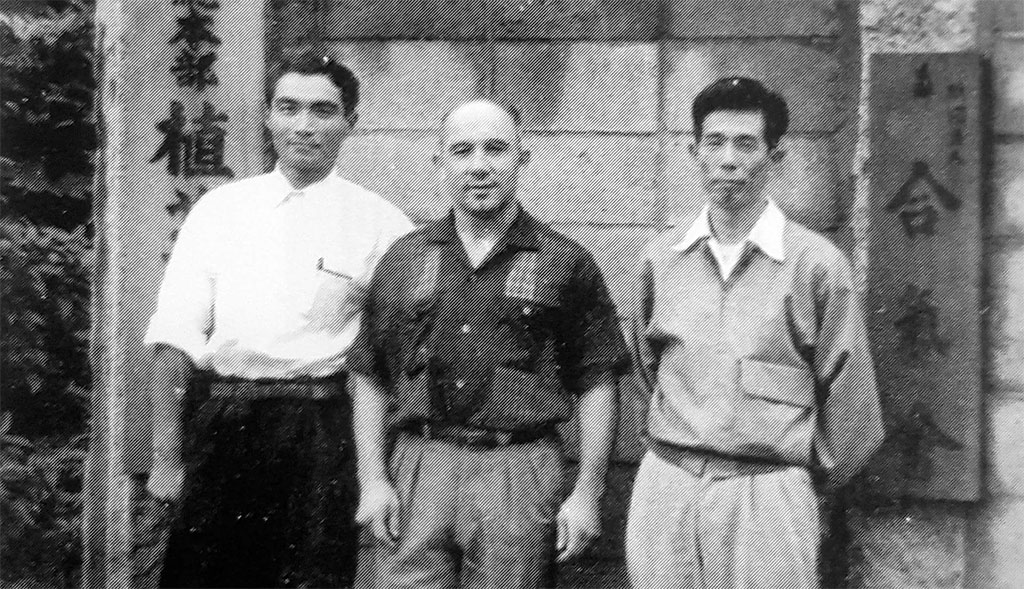
André Nocquet in front of the Hombu Dojo with Tada Hiroshi and Yamaguchi Seigo (c. 1957)
Although Tada Shihan does not remember ever having seen the jacket, or any other similar to it, he let me know that from the moment O Sensei had started to learn calligraphy from Abe Seiseki Sensei, he was often asked to sign personal items such as fans and wooden swords. According to him, this jacket could have been such an object. Tada Shihan also seemed to suggest that it was entirely possible that Nocquet had this jacket made for himself and requested that the name of O Sensei be embroidered on it. This is certainly possible but personally, I think that the fact that the embroidery sits behind the stitching lines, which Tada Sensei probably did not see since I only had photos to show him, makes that unlikely.
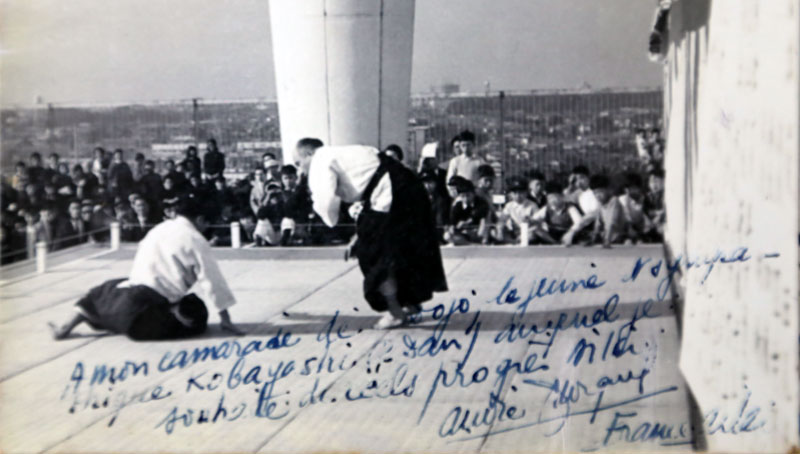
Demonstration on the roof of the Toyoko department store in Shibuya (kindly given to me by Kobayashi Yasuo Shihan).
I decided to ask the question of another contemporary of the time and I went to Kodaira to show the keikogi to Kobayashi Yasuo Sensei, whom I had also interviewed before. He had never seen this particular keikogi either, but he immediately noticed that it looked handmade. He said it was fairly common at the time because there weren’t any big manufacturers yet. Mihaly Dobroka, who had arranged the meeting, reminded us that there was a tradition where the person offering a garment used to wear the garment once to make the gift more personal. Kobayashi Sensei replied that he did remember that such a custom existed and that it could well have been the case for this particular garment. He said that given the jacket’s relatively large size, it was unlikely to have been made for O Sensei, who was only about five feet tall.
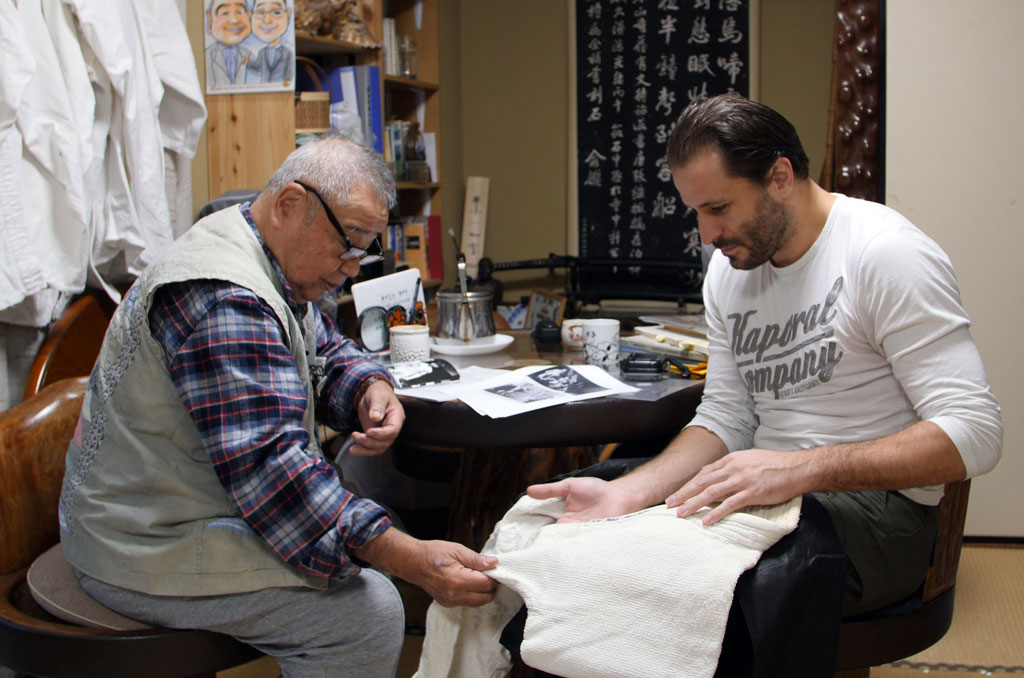
Kobayashi Yasuo Sensei and I studying the keikogi
What does such an item represent?
Thanks to the help of all of the above-mentioned people who were kind enough to help me, we now have a clearer idea of the circumstances under which André Nocquet could have received this priceless object. It is likely that O Sensei had the keikogi made by hand and embroidered his signature on it during the manufacturing process. He probably wore it once, symbolically, before offering it to Nocquet before he left for France. According to the many people who saw it in France and the numerous patches made, Nocquet seems to have used this keikogi on numerous occasions.
In my opinion, this keikogi represents the friendship between France and Japan (remember that Nocquet was commissioned as part of the recent Franco Japanese Cultural Agreement signed in 1953) and the keen interest of the French people regarding Japanese budo. I hope that in the future, the link between our two nations through the practice of aikido, which was initiated by O Sensei and his son Kisshomaru, and continued by a number of pioneers in Japan and abroad, will remain strong and continue to grow. In future articles, I will talk about the contents of André Nocquet’s personal journal.
I would like to sincerely thank Tada Hiroshi Shihan, Kobayashi Yasuo Shihan, Jordy Delage, Hara Jouji, Baptiste Tavernier, and Mihaly Dobroka for their help with the study of this keikogi, and Claude Duchesnes and Frank Decraen for entrusting me with the care taking of those invaluable artifacts.
About the author
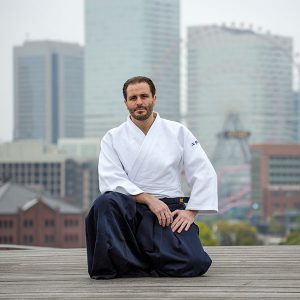
Guillaume Erard
Guillaume Erard is an author and educator, permanent resident of Japan. He has been training for over ten years at the Aikikai Headquarters in Tokyo, where he received the 6th Dan from Aikido Doshu Moriteru Ueshiba. He studied with some of the world’s leading Aikido instructors, including several direct students of O Sensei, and has produced a number of well regarded video interviews with them. Guillaume now heads the Yokohama AikiDojo and he regularly travels back to Europe to give lectures and seminars. Guillaume also holds the title of 5th Dan in Daito-ryu aiki-jujutsu and serves as Deputy Secretary for International Affairs of the Shikoku Headquarters. He is passionate about science and education, and he holds a PhD in Molecular Biology. Guillaume’s work can be accessed through his website and on his YouTube channel.






